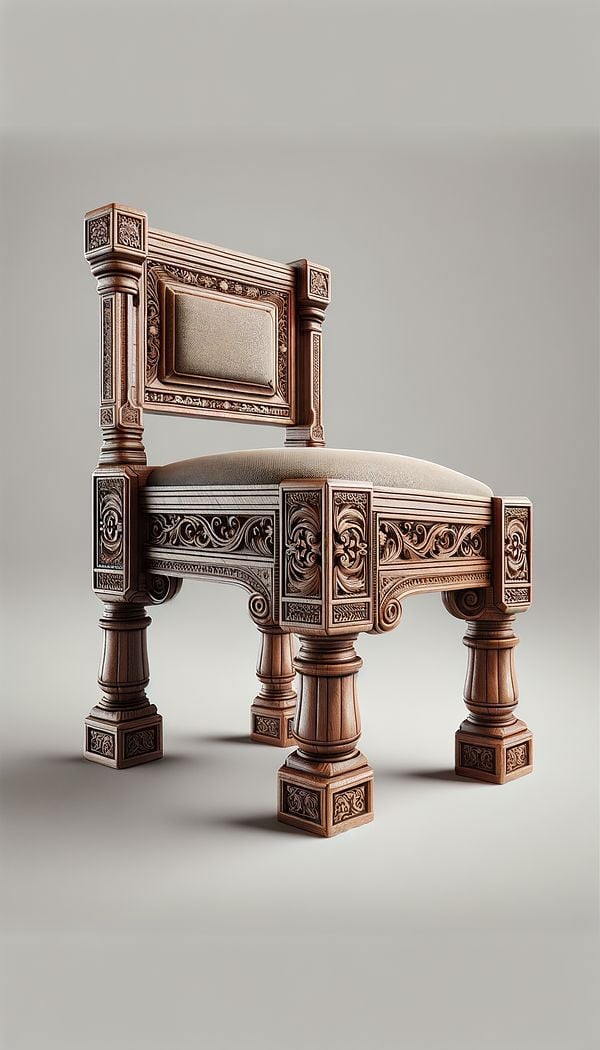What is a Corner Block?
A corner block is a decorative or structural element used at the corner joints of furniture.
Description
In the context of interior design, a corner block represents both a functional and aesthetic element found in furniture construction. Situated at the joints where two pieces meet, typically at corners, these blocks serve a dual purpose. Structurally, they enhance the durability and stability of furniture pieces by providing additional support at critical stress points. Aesthetically, corner blocks can be ornately carved or designed to add a visually appealing element to the furniture.
Corner blocks are most commonly seen in pieces where strength is critical, such as chairs, tables, and bed frames. The use of corner blocks is a technique that has been employed for centuries and can often be found in antique furniture, reflecting the craftsmanship and attention to detail of the period. Modern furniture makers also utilize corner blocks, incorporating them into contemporary designs that prioritize both function and form.
Depending on the design, corner blocks may be hidden from view, serving solely as a structural support, or prominently displayed as part of the furniture's decorative scheme. They can be made from various materials, including wood, metal, or plastic, chosen for their strength and compatibility with the rest of the piece.
Usage
For example, an artisan crafting a wooden dining table might install corner blocks under the tabletop where it meets the legs to ensure the table is sturdy and can support weight. In a vintage armchair, you might find beautifully carved wooden corner blocks adding to the chair's aesthetic appeal while reinforcing the joints.
FAQs
-
Are corner blocks necessary for all pieces of furniture?
No, not all furniture pieces require corner blocks. Their use depends on the furniture's design, the materials used, and the need for additional structural support at the joints.
-
Can corner blocks be added to existing furniture?
Yes, in some cases corner blocks can be added to existing furniture to enhance its durability, especially if the joints have loosened over time. However, it's essential to match the material and ensure a proper fit.
-
Are corner blocks visible on all pieces of furniture?
Corner blocks can either be hidden, serving purely a structural role, or visible as part of the furniture's design. The visibility depends on the piece's design intentions and aesthetic goals.
Practical Application
When designing or selecting furniture, considering the use of corner blocks can be wise for those concerned with longevity and sturdiness. In addition to providing structural support, corner blocks can also add a unique decorative element to a piece. Choosing furniture with visible and well-designed corner blocks can enhance the overall aesthetic of a room.
-
Furniture Types599 articles
-
Fabrication & Craftsmanship133 articles
-
Decorating Principles & Elements330 articles
-
Construction & Building86 articles
-
CockbeadingCockbeading is a decorative moulding used in fine cabinetry.
-
Spiral TurningSpiral Turning is a decorative woodworking technique that creates twisted patterns along the length of a piece of wood.
-
Tilt TopA tilt top refers to a table whose top can be vertically adjusted or tilted.
-
Barrel VaultA barrel vault, also known as a tunnel vault or a wagon vault, is an architectural element characterized by its semi-cylindrical shape.
-
BattingBatting is a layer of material used to provide padding and insulation.
